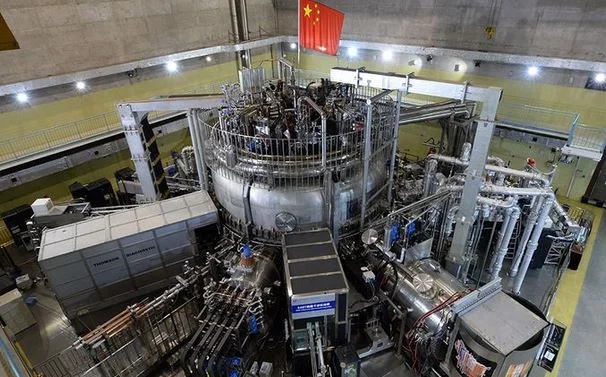UPSC Articles
HL-2M Tokamak: The Artificial Sun of China
Part of: GS Prelims and GS-III – Sci & Tech
In news
- China successfully powered up its “artificial sun” nuclear fusion reactor for the first time marking a great advance in the country’s nuclear power research capabilities.
Key takeaways
- The HL-2M Tokamak reactor is China’s largest and most advanced nuclear fusion experimental research device.
- Name of the mission: Experimental Advanced Superconducting Tokamak (EAST).
- Location: Sichuan province
- The reactor is often called an “artificial sun” due to the enormous heat and power it produces.
- It uses a powerful magnetic field to fuse hot plasma and can reach temperatures of over 150 million degrees Celsius which is approximately ten times hotter than the core of the sun.
- Scientists hope that the device can potentially unlock a powerful clean energy source.
Important value addition
- Nuclear fusion is a reaction in which two or more atomic nuclei are combined to form one or more different atomic nuclei and subatomic particles (neutrons or protons).
- Fusion is the process by which the sun and other stars generate light and heat.
- It is a nuclear process, where energy is produced by smashing together light atoms.
- It is the opposite reaction of fission, where heavy elements like Uranium and Thorium are split apart.
- For a nuclear fusion reaction to occur, it is necessary to bring two nuclei so close that nuclear forces become active and glue the nuclei together.
Do you know?
- Nuclear forces are small-distance forces and have to act against the electrostatic forces where positively charged nuclei repel each other.
- This is the reason nuclear fusion reactions occur mostly in high density, high-temperature environment which is practically very difficult to achieve under laboratory conditions.














